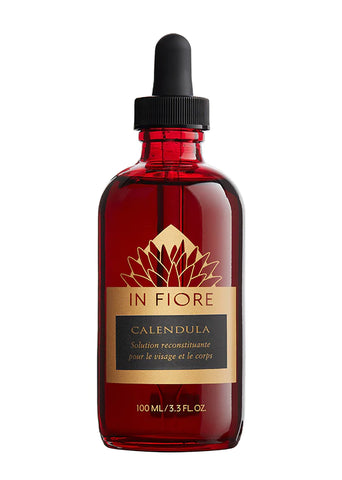Turmeric Talk

The use of turmeric dates back nearly 4,000 years to Vedic culture in India. Its benefits are vast. In India, it was traditionally used for disorders of the skin, upper respiratory tract, joints, and digestive system. More specifically for the complexion, turmeric has anti-inflammatory properties, helps to treat acne, supports skin health, brightens under the eyes, and treats the signs of aging.
Botanical Source: Curcuma longa L., C. aromatica Salisbury (Zingiberaceae).
Pharmaceutical Name: Tuber/Radix Curcumae.
Alternate Names: Kurkum, 'Aqid hindi (Arabic), Haldi (Hindi), Ukon (Japanese), Yu jin, Yu jin xiang, Chuan yu jin (Mandarin Ch.), Yuk gan (Cantonese Chinise).
Constituents: Essential oil 5%, including camphene, curcumene, phellandrene, camphor, tumerol, tumerone, cucumone, carvone, valeric, and caproic acid.
Tropism: Liver, gallbladder, heart, circulatory, reproductive, nervous system; Warmth, Fluid bodies, Liver, Stomach, Heart, Lung, yin wei meridians.
Preparation: Essential oils through steam distillation and CO2 extract of the root; decoctions and tinctures of root for medicinal preparations. As food, they are ingested in juices, curries, and other meal preparations.
Essential Function: Analgesic, circulatory stimulant, liver protectant. Decongest and stimulate liver bile production, gall bladder contraction, and bile flow. Promote menstruation and labor.
Traditional Use: Warming stimulant to gastrointestinal, hepatobiliary, and reproductive functions. Treat stagnant, cold conditions of the liver, gallbladder, and intestines. Analgesic, anti-inflammatory, and rubefacient to relieve pain and swelling in rheumatic conditions.
Physiological: Tincture, decoction, juice, and food forms. Vitalize heart blood, restore coronary circulation, and dissolve fatty deposits. Decongest the liver, promote digestion, reduce inflammation, promote bile flow, and relieve constipation. Mild uterine stimulant and teratogenic (causing malformations of an embryo or fetus), contraindicated for internal use in infants and during pregnancy. Indicated for chronic pain conditions such as rheumatic/arthritic, menstrual, and postpartum.
Curcumin, one of turmeric’s most active constituents, has been shown to protect the liver from many toxic compounds. Curcumin also helps break down fats and reduce serum cholesterol levels (the liver manufactures cholesterol). It also protects the liver by stimulating its detoxification pathways, free-radical scavenging, and stimulation of bile secretion.
Psychological: Whole body massage. PNEI (Psycho Neuro Endocrine Immunology) stimulant in weakness conditions. Encourages the development of self-confidence, optimism, positive thinking, and the will to succeed and helps to ease depression, creative blocks, emotional repression, and feelings of limitation or low self-esteem—stimulates sexual desire.
Topical: Compress, lotion, cream, balm, and oil. Promotes tissue repair by lowering inflammation and relieving pain and swelling.
TCM: Bitter, pungent, aromatic, circulating nature. Warmth, fluid bodies, liver, stomach, heart, lung, yin wei meridians. Addresses gallbladder and stomach qi stagnation and damp heat of the liver gallbladder. Uterus qi stagnation. Contraindicated in conditions not presenting symptoms of qi or blood stagnation and in yin deficiency from blood loss.
Ayurveda: Turmeric is an essential herb in the Ayurvedic medicine of India as a systemic cleanser and digestive aid, and in treating arthritis, dysentery, fever, infections and jaundice, and other liver-related problems. The fresh rhizomes are crushed and mixed with water, given in spoonful doses daily. The aqueous extract is also added to bathwater to treat various skin disorders. Many women in India who have smooth, velvety skin believe it is attributable to their regular consumption of turmeric.
Chakra Affinity: Sacral. Hindu people believe turmeric has auspicious qualities and use it in many sacred ceremonies by making it into a paste and applied to the forehead. Ajna chakra (or third eye) during pujas (devotional ceremonies) weddings.
Psychospiritual: Turmeric supports visualization, the assimilation of ideas, and creative expression and aids in integrations to help one overcome a state of estrangement due to feelings of alienation.
Anthroposophical: Turmeric is associated with the anthroposophical constitutional type or reactional mode, neurasthenia. Turmeric oil is often used to address neurasthenia that forms around feelings of alienation, where it retains its dominance regarding the person's psycho-spiritual state.

In the neurasthenic constitution, the nerve-sense system predominates, and catabolic upper currents are too intense, resulting in "burnout" and insufficient energy to guide growth and regeneration processes at the lower pole. Hence, the individual becomes overactive mentally while physically inertial and debilitated. This clinging of the upper currents to the nerve-sense system leads to oversensitivity to sensory stimuli resulting in irritability, introversion, and sleep disturbance.
The dominance of the nerve-sense pole characterizes neurasthenia. The nerve-sense system, concentrated mainly in the head, facilitates consciousness and perception. The brain and nerve tissue cells cannot regenerate. Its functional capacity sacrifice allows for sensory and other perceptual data influx as consciousness must be associated with a diminution of metabolic activity because the nerve-sense system must remain free to receive external impressions.
Qualities and symptoms from the composite turmeric oil picture consistent with neurasthenia include: the plant is propagated by cuttings of the rhizome and requires a warm climate; it has large, smooth, sword-shaped, lily-like leaves that can grow up to about 3 feet long [as leaves are the metabolic organ of the plant, lanceolate leaves (such as those of the turmeric plant) are considered in anthroposophical medicine to be a signature of the predominance of the nerve-sense pole]; turmeric has a thick rhizome (an underground, horizontal stem that sends out leaves or shoots from its upper surface and roots from its lower surface).
The secondary rhizomes are finger-shaped and rootless [a rhizome, which must analyze the soil milieu and selectively uptake nutrients and water from the soil, is a nerve-sense system organ; the rootlessness of the secondary rhizomes can also be correlated with the detached neurasthenic state.]; analgesic [pain-reduction involves inhibition of nerve signals]; anti-coagulant [coagulation is often the product of the cold, hardening influence of the nerve-sense pole]; stimulates the secretion of endogenous cortisone by the adrenal glands and sensitization of the body's cortisol receptor sites.

CALENDULA SOLUTION

VIS CLAIR SUPRÊME
